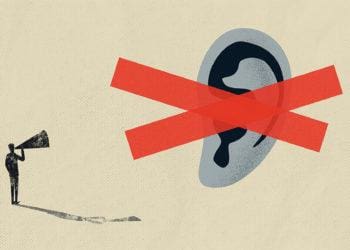Changing your perceptions and your own behavior can be key to overcoming a challenge. Linda Henman encourages leaders to turn off behavior “autopilot” to make sure what they’re doing is really working.
Too often discussions of attitudes, values and beliefs center on the person, making us blind to the power of the situation. Marketers advocate finding the right psychographic for a product. Psychologists talk about finding the person who is ready to quit smoking. Human resource managers focus on getting the right people on the bus, and change-management experts encourage us to classify people according to their readiness to accept change. As a consultant who specializes in succession planning and C-suite selection, I admit I have fallen into this trap too.
But Stanford psychologist Lee Ross didn’t.
Instead, he developed The Fundamental Attribution Error theory by surveying dozens of studies in psychology and noting that people have a systematic tendency to ignore the situational forces that shape behavior. As Ross pointed out, the error lies in our inclination to attribute people’s behavior to the way they are rather than to the situation they are in. So often, what looks like an attitude problem is really a situation problem.
Therefore, tweaking the environment frequently alters beliefs, which in turn makes the right behavior easier and the wrong behavior a little bit less so. For example, Last year I coached an executive in the construction industry who was having trouble prioritizing, which fueled his anxiety. He simply wasn’t getting things done.
I asked Pete to walk me through a typical day so I could help him identify how he created situations that fueled his anxiety. He said he opened email first thing in the morning, which immediately triggered apprehension. So, first thing out of the gate, Pete felt overwhelmed, which caused him to have trouble prioritizing, which caused him to lose control of his day.
Pete said, “that’s just the way I am,” but I didn’t let him get away with that. Instead, I asked him to change his situation by deconstructing success he’d had previously. He admitted that in the past he had created folders for non-critical emails that he’d handle on certain days at certain times. In other words, he took control and changed his situation, which changed his beliefs about what’s important, which changed his habits. Some psychologists might call this “self-manipulation.” I choose to call it “self-regulation.” Either way, changing the situation can lead to the self-awareness that drives behavior change.
COVID-19 has changed the global situation, and many companies have reacted with their own altered realities. Organizations all over the world face the same questions:
- “When can people safely return to work?”
- “How can we maintain productivity while people work remotely?”
- “How can we now outpace competitors?”
I have always resisted and have encouraged my clients to resist work-from-home options because I feared a decrease in productivity. However, my best clients are not reporting any drop in productivity. Apparently, people who ordinarily spend two hours a day commuting have found renewed energy and focus. In some cases, productivity has improved with self-isolation. The environment changed, which changed my beliefs about working from home, and it seems the beliefs of others have changed too. Once the situation changes again, I anticipate a return to my original premise that most companies most of the time fare better when people go into the office.
As Pete demonstrated, people are incredibly sensitive to the environment and the culture — to the norms and expectations of the communities they choose. Also, he reminds us that if what we’re doing doesn’t work, we should quit doing that and get ourselves off behavior “autopilot.”
Read: Using Behavior Science to Dramatically Improve Your Compliance Program



 Dr. Linda Henman is one of those rare experts who can say she’s a coach, consultant, speaker, and author. For more than 30 years, she has worked with Fortune 500 Companies and small businesses that want to think strategically, grow dramatically, promote intelligently, and compete successfully today and tomorrow. Some of her clients include Emerson Electric, Boeing, Avon and Tyson Foods. She was one of eight experts who worked directly with John Tyson after his company’s acquisition of International Beef Products, one of the most successful acquisitions of the twentieth century.
Linda holds a Ph.D. in organizational systems and two Master of Arts degrees in both interpersonal communication and organization development and a Bachelor of Science degree in communication. Whether coaching executives or members of the board, Linda offers clients coaching and consulting solutions that are pragmatic in their approach and sound in their foundation—all designed to create exceptional organizations.
She is the author of Landing in the Executive Chair: How to Excel in the Hot Seat, The Magnetic Boss: How to Become the Leader No One Wants to Leave, and contributing editor and author to Small Group Communication, among other works.
Dr. Henman can be reached at
Dr. Linda Henman is one of those rare experts who can say she’s a coach, consultant, speaker, and author. For more than 30 years, she has worked with Fortune 500 Companies and small businesses that want to think strategically, grow dramatically, promote intelligently, and compete successfully today and tomorrow. Some of her clients include Emerson Electric, Boeing, Avon and Tyson Foods. She was one of eight experts who worked directly with John Tyson after his company’s acquisition of International Beef Products, one of the most successful acquisitions of the twentieth century.
Linda holds a Ph.D. in organizational systems and two Master of Arts degrees in both interpersonal communication and organization development and a Bachelor of Science degree in communication. Whether coaching executives or members of the board, Linda offers clients coaching and consulting solutions that are pragmatic in their approach and sound in their foundation—all designed to create exceptional organizations.
She is the author of Landing in the Executive Chair: How to Excel in the Hot Seat, The Magnetic Boss: How to Become the Leader No One Wants to Leave, and contributing editor and author to Small Group Communication, among other works.
Dr. Henman can be reached at 










